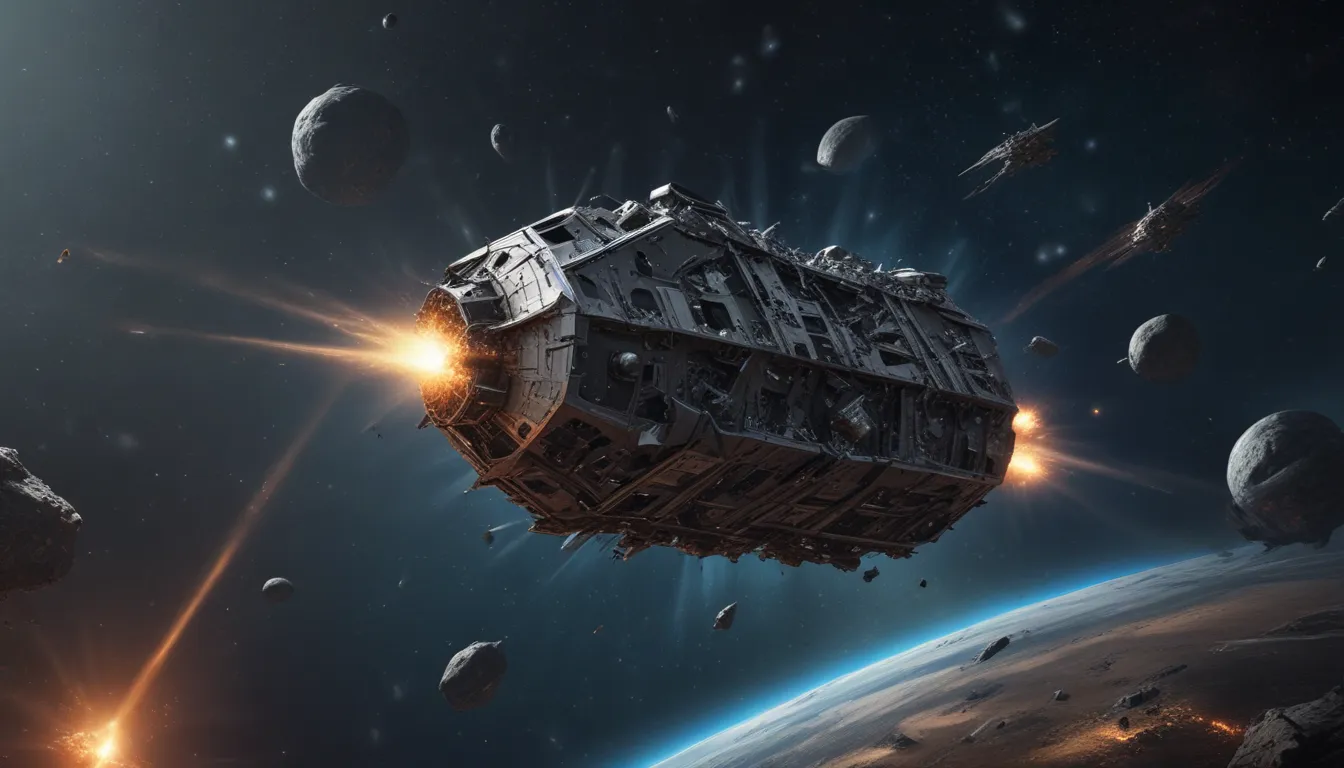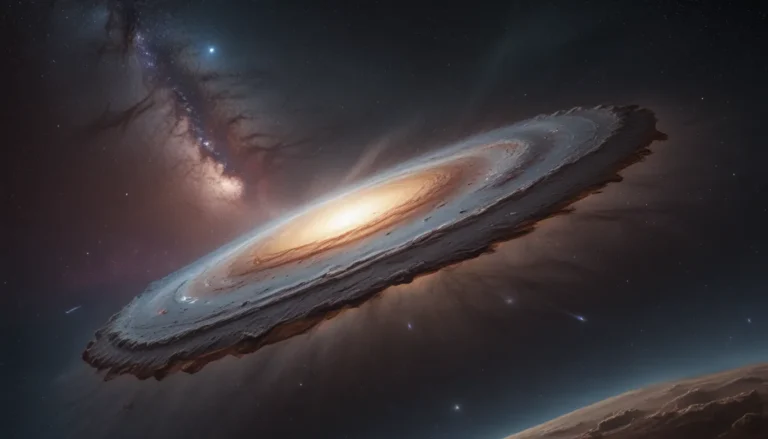The pictures we use in our articles might not show exactly what the words say. We choose these pictures to make you interested in reading more. The pictures work together with the words but don’t take their place. The words still tell you the important facts.
Space debris, also known as space junk, presents a growing concern as remnants of human-made objects orbit Earth. With the increase in space missions and satellite launches, the accumulation of space debris poses a significant threat to operational satellites and future space exploration endeavors. To address this issue, space agencies and international organizations have developed space debris mitigation standards aimed at minimizing the creation of new debris and actively removing existing space junk from orbit.
Understanding the Growing Issue of Space Debris
The escalating number of satellites and space missions has amplified the problem of space debris in Earth's orbit. Space debris encompasses defunct satellites, spent rocket stages, and other fragments that linger in space, posing a risk to operational satellites and the International Space Station.
Establishing Space Debris Mitigation Standards
Recognizing the urgency of addressing the space debris dilemma, space agencies and international bodies have formulated space debris mitigation standards. These guidelines offer directions for satellite operators and space mission planners to decrease the generation of new debris and the likelihood of collisions in space.
Implementing the 25-Year Rule for Post-Mission Disposal
A pivotal guideline within space debris mitigation standards is the 25-year rule, stipulating that satellites and upper rocket stages ought to undergo post-mission disposal within 25 years of their operative life. This disposal can occur through atmospheric reentry or by relocating objects to a graveyard orbit.
Emphasizing the Significance of End-of-Life Disposal
The proper end-of-life disposal of satellites and rocket stages plays a vital role in preventing the accumulation of space debris. By securely deorbiting satellites at the end of their missions or moving them away from operational orbits, the risk of collisions and the generation of additional debris diminishes significantly.
Highlighting Collision Avoidance Measures
Space debris mitigation standards stress the importance of collision avoidance measures. Satellite operators are mandated to monitor active satellites and adjust their trajectories if there is a high likelihood of collision with a known piece of space debris, another operational satellite, or an inactive satellite.
Incorporating Debris Shielding and Spacecraft Design
The design of spacecraft is crucial in mitigating risks associated with space debris. Satellites and spacecraft are outfitted with features like debris shields to shield critical components from potential impacts. Moreover, spacecraft manufacturers consider end-of-life disposal procedures during the design phase to ensure easier and safer disposal.
Facilitating International Cooperation in Space Debris Mitigation
Addressing the issue of space debris necessitates international collaboration. Spacefaring nations and organizations collaborate to exchange data on debris, innovate technologies for active debris removal, and promote best practices in space debris mitigation to ensure a safer space environment for future missions.
Recognizing the Role of Space Traffic Management
Space traffic management plays a pivotal role in space debris mitigation. By regulating satellite launches and operations, space agencies can coordinate and monitor space activities, reducing collision risks and ensuring adherence to space debris mitigation standards.
Advancing Active Debris Removal Missions
To further combat the space debris problem, ongoing efforts are directed towards developing technologies for active debris removal. These missions strive to capture and eliminate large debris objects from orbit, thereby reducing the overall population of space debris and mitigating collision risks.
Understanding the Implications of Space Debris on Future Space Exploration
Space debris poses a considerable challenge for upcoming space exploration missions. As space agencies plan missions to celestial bodies like the Moon and Mars, mitigating risks associated with space debris becomes increasingly crucial to ensure the safety of spacecraft and astronauts.
Emphasizing Space Debris Tracking and Monitoring Efforts
Continuous tracking and monitoring of space debris by space agencies and organizations yield crucial data on debris population and trajectories. This information is indispensable for predicting potential collisions and guiding future space missions and debris mitigation strategies.
Advocating for Ongoing Research and Innovation
Space debris mitigation standards evolve continually with advancements in technology and research insights. Persistent research and innovation are key in developing advanced debris removal techniques, enhancing spacecraft design, and improving the efficacy of space debris mitigation strategies.
Conclusion
In conclusion, space debris mitigation standards are vital for the sustainability of space exploration and satellite operations. By adhering to these standards and implementing effective mitigation practices, such as satellite deorbiting and collision avoidance maneuvers, we can mitigate the risks associated with space debris. Collaboration between space agencies, satellite operators, and international organizations is essential to ensure the longevity of space activities.
As technology progresses and space missions become more frequent, prioritizing space debris mitigation efforts is imperative. With proper regulations and proactive measures, we can safeguard our valuable satellite assets and preserve the future of space exploration for generations to come.
FAQs
Q: What is space debris mitigation?
A: Space debris mitigation involves practices and guidelines aimed at reducing orbital debris and minimizing associated risks, such as satellite deorbiting and collision avoidance maneuvers.
Q: Why is space debris mitigation important?
A: Mitigation is critical to safeguard satellites, space missions, and the International Space Station from collisions that can result in infrastructure damage and further debris creation.
Q: Who implements space debris mitigation standards?
A: Space agencies, satellite operators, and international organizations collaborate to enforce guidelines promoting responsible space operations.
Q: How does satellite deorbiting work?
A: Satellite deorbiting entails intentionally bringing satellites back to Earth's atmosphere at the end of their operational life to minimize additional space debris.
Q: Are there international agreements on space debris mitigation?
A: Yes, agreements like the Space Debris Mitigation Guidelines and those by the Inter-Agency Space Debris Coordination Committee address space debris mitigation.
Q: How can individuals contribute to space debris mitigation?
A: While individuals may not directly impact space debris mitigation, they can support initiatives promoting responsible space practices, stay informed about space debris issues, and advocate for awareness and action in mitigation efforts.
Embark on a journey through space debris mitigation standards and delve into the intricacies of safeguarding our cosmic neighborhood. Explore the measures and technologies shaping the future of space exploration, ensuring a safer and more sustainable environment for satellites, spacecraft, and humanity's celestial aspirations.






